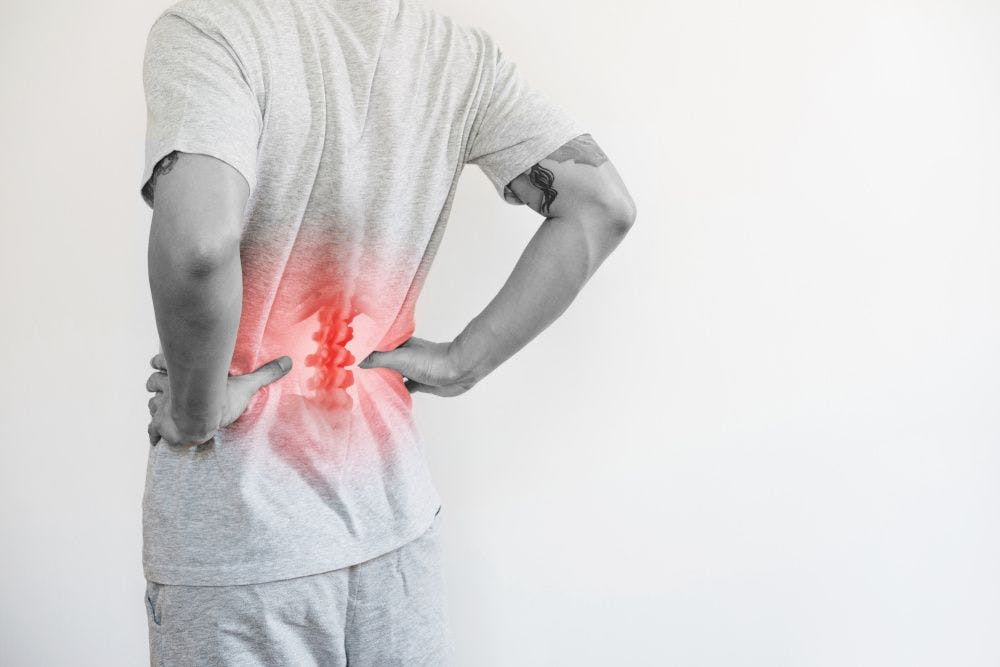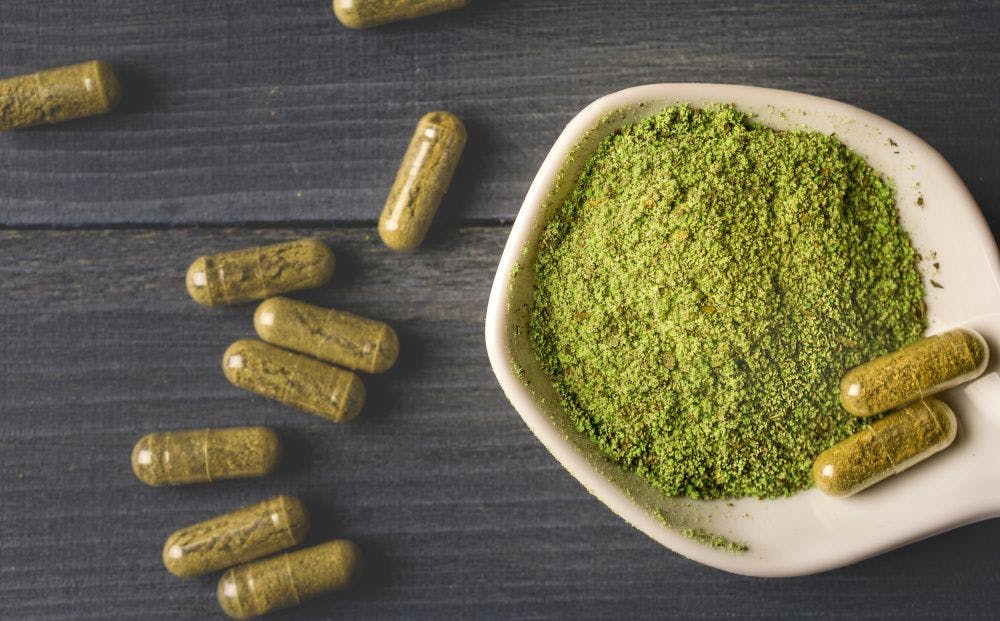The mineral supplements market is rock solid in 2022
Going forward, growth will rest on moving minerals beyond the body basics to fulfilling consumer expectations for condition-specific ingredient combinations, increased bioavailability, and new delivery methods.
Photo © Brazhyk - Stock.adobe.com

Are we in? Are we out? As we near the end of 2022, the impact of the global pandemic is still making us wary—and weary. Meanwhile, the war in Ukraine, lingering supply chain issues, the ups and downs of the financial markets, and the threat of inflation worldwide are causing new worry: uncertainty about future consumer demand for dietary supplements.
Suppliers in the minerals market, however, view the mineral supplements category as rock solid rather than on a rocky road. And that’s because the sales numbers are still encouraging as the essentialness of minerals for basic body functions is undisputed.
Certainly, the numbers look good. According to Expert Market Research, the global mineral supplements market is expected to grow at a CAGR of 5% in the forecast period 2022-2027, reaching $14.8 billion by 2026.1
Companies are reporting positive responses to the category, too—albeit with some concerns.
For example, Youval Saly, vice president, sales and marketing, Gadot Biochemical Industries Ltd. (Haifa Bay, Israel), says that during the pandemic the company experienced a peak in demand—increasing at 3%-5%—because, he says, “most customers wanted to secure their stocks.” He observes that even as recently as the beginning of 2022, “we saw optimistic growth in the minerals market, especially in the dietary supplements and functional foods categories that have a higher increase in sales than other categories.”
But then, Russia began its invasion of Ukraine, and according to Saly, the war, combined with supply-chain disruptions and the global energy crisis, created a more conservative scenario, specifically in Europe. But, he says, “there is still room for growth, especially in North America.”
That growth may well rely on companies moving minerals beyond the body basics and into fulfilling consumer expectations for value-added functional and condition-specific ingredient combinations, increased bioavailability, and new delivery methods.
Priming Minerals for Category Growth
“By far, the fastest-growing product is magnesium,” says Saly. He shares that Gadot Biochemical successfully launched its ingredient Cal2Mag in early 2022. The branded ingredient is a unique blend of calcium citrate and magnesium citrate specially designed for calcium fortification and to support optimal bone health.2
Saly likes the addition of magnesium, “in the perfect ratio with calcium,” to offset the potential problem of calcification leading to heart problems from the use of calcium by itself. He believes the combination of the two high-bioavailable ingredients “may decrease the risk of calcification.”
Brandon Johnson, MS, vice president, product innovation, Trace Minerals (Ogden, UT), thinks that “condition specific–related ingredients is a fun and exciting area with a lot of growth potential.” Case in point: earlier this year Trace Minerals introduced a new magnesium dietary supplement to support healthy blood pressure levels.
That introduction was one of nine new products added to Trace Minerals’ already extensive product line. According to a press release3, Trace Minerals’ Blood Pressure Support is an orange mango mix-in drink powder that contains 250 mg of magnesium citrate, 90 mg of potassium bicarbonate, and 50 mg of Trace Minerals’ proprietary Ionic Trace Minerals complex. Each serving of Trace Minerals Blood Pressure Support has just 10 calories and 2 g of carbohydrates, and is gluten free and certified vegan. The company also introduced a new flavor of magnesium gummies.
Marlena Hidlay, global strategic marketing manager, Albion Minerals at Balchem (New Hampton, NY), also sees magnesium as a stalwart ingredient with room for growth. She says, “Magnesium saw tremendous growth in 2020, 11.4% versus prior year, and has continued to grow.” According to Hidlay, Nutrition Business Journal projects above-market growth in 2023 and 2024.4
Zinc, too, is on the rise, according to Hidlay. Balchem’s own consumer research5 indicates that more than one in three U.S. consumers currently takes a zinc supplement to support immunity. Zinc was another ingredient that “realized pandemic-induced growth as immunity has been top of mind with consumers,” she adds.
Additionally, says Hidlay, external market research from Mintel advises that more than half (53%) of Americans say their ideal dietary supplement would offer immune support.6
“To address the needs of our customers and their consumers, Balchem developed a new product form, Zinc Max, a 27% zinc bisglycinate chelate,” advises Hidlay. The branded ingredient, introduced in March 2022, is now commercially available. It is the latest zinc offering within the Z-life brand in the Albion Minerals portfolio. Further, says Hidlay, “It meets the clean-label demands of today’s consumers and is silica free, not bioengineered, vegan, and Non-GMO Project verified.”7
Trace Minerals also introduced two new products with zinc this year, including Liquid Zinc + Quercetin in an orange mango flavor and Quercetin+ Zinc Powder in an orange cream flavor.3
According to Saly, consumer demand for minerals is rising as “consumers understand the need to consume magnesium, calcium, and zinc to support their immune system and reinforce holistic health.”
More News, More Trends
Angel Aponte, MS, senior sales executive and brand manager, AIDP Inc. (City of Industry, CA), says “AIDP has been selling minerals for many years. Recently, we have seen growth in many of the commodity minerals that support the immune system. We also see an increased interest in added-value minerals.”
To that point, in January, AIDP announced its role as the exclusive supplier of the Ultimine line of minerals for the Americas, according to a company press release. Cura Global Health Inc. (Ames, IA) has a 10-year history of developing the brand of plant-based, whole food–derived minerals and invented “Koji Inspired Wellness.” The brand is derived from natural fermentation of Koji fungi (Asergillus oryzae). The minerals—including iron, zinc, and multi-minerals—are taken up by the fungus through a patented fermentation and harvesting process to yield highly bioavailable minerals.8
AIDP President Mark Thurston stated, “We believe these unique, food-derived, bioavailable minerals fermented from Koji fungi have a large market potential.”8
More recently, AIDP introduced a second new line, this one consisting of highly bioavailable, fully reacted minerals allowing for easier transport and reducing GI issues common with many minerals, according to Aponte. This new line of pure minerals, she says, “will focus on only what you need in a mineral without any fillers.”
There’s another condition-specific area for another mineral ingredient that Hidlay suggests. “While focus on proactive health and immunity continues, [consumers] now more clearly recognize the impact of mental and emotional health.”5 It is here that Hidlay sees potential growth opportunity for iron, which she says consumers associate with brain health. In fact, she’s aware of research that positions iron among the top five ingredients with brain health benefits, according to U.S. consumers.9 Balchem supplies Ferrochel, its flagship ferrous bisglycinate chelated iron ingredient.
“Our customers are looking for specialty chelates. Mineral chelates have enhanced solubility and limited interaction with other dietary components, leading to enhanced mineral absorption,” Hidlay explains.
Not only does Gadot’s Saly see brain health and immunity as specific condition-related categories of growth for minerals, he also sees possibilities for that category in sports nutrition and mood support. And he’s not alone.
Johnson at Trace Minerals, too, is optimistic about the many places minerals can move into. He explains that “fitness and optimal wellness are popular buzzwords. As we demand more and more of our time and our bodies, we are always going to be looking for how to recover quickly and optimize our performance. Those are two big markets that minerals play important roles in,” he claims.
Minding the Mind of the Consumer
The mindset of the consumer is what Saumil Maheshvari, senior vice president of business development at Orgenetics Inc. (Brea, CA), recognizes as one of the keys to unlocking growth for the minerals category. Orgenetics has two branded ingredients lines, Rgen and Orgen, that supply organic minerals such as calcium, chromium, and magnesium, among others.10( As Maheshvari explains, there are different drivers for different subsets of consumers, including those seeking specific condition-related ingredients, while others are intrigued by ingredients that are buzz-worthy. Some are just looking for palatable pricing, he adds.
“There are some consumers who were attracted to the supplement space or health industry during the pandemic, looking for answers and immune protection,” says Maheshvari, “and perhaps they are more oriented towards press attention and functional benefits. There are other consumers who are hyper-aware of their health conditions and the supplementation that can help with those conditions.” For that subset of consumers, he says “it is a lot of science and research-driven choices” that motivates them.
Maheshvari advises that companies might have to choose a subset to aim a particular product or brand to. Further, he reminds us that age plays a role, too, in growth, explaining that age demographics are dynamic, allowing for growth even in the basic minerals as consumers age. It’s here that health conditions, combined with age, come into play.
For example, Maheshvari observes that health priorities change given “macro conditions or world events. So those different strata of consumers will find that basic mineral supplementation like calcium or iron are important [for] certain age groups—often directed by their physicians. Additionally, as the world population in general gets older and larger, there is still room for growth in the basics,” he says.
Mineral Companies Tout Changes in Mindset
Balchem’s Hidlay points to a company blog post that explored the notion that “trends are always in flux, but the recent global health crisis created changes that are here to stay.”11
Allowing that the pandemic provided people with “a period of recalibration, reflection, and resilience,” the blog post philosophized that consumer lives were disrupted in ways that led people to become more purposeful in addressing their health. Living witnesses to a more realistic understanding of human frailty put them on a path to mindful wellness.11
As many have recognized, that revitalized commitment to health is one of the welcome changes which the industry is banking will remain a behavioral habit, rather than just a movable trend.
Not that mineral companies aren’t happy to wade into trends where other categories have been swimming. They are.
For example, Johnson says that Trace Minerals still sees a very good response to foundational health ingredients like calcium, magnesium, and zinc. He thinks that “some of the biggest growth opportunities will come in the form of novel delivery systems.” As an example, he observes that “we are already seeing a huge growth in the gummy market for both standalone mineral ingredients as well as full multivitamin/mineral types of products.”
“People are always looking for convenient, fun, and good-tasting delivery systems. I think we will see the gummy market continue to grow as well as other forms of chewable delivery systems,” Johnson adds.
Both Aponte and Saly are counting on a growing awareness of changes in the earth that are changing behaviors in the diet.
Says Aponte, “Consumer awareness of the importance of minerals is growing, specifically magnesium and zinc for immune support. In addition to supporting immune health, consumers seem aware of how minerals are being depleted in the food supply. Customers are more aware than ever that poor diet can cause a host of deficiencies, including minerals.”
Post-pandemic (if there ever is such a thing), Saly sees growth for minerals driven by consumers who have become more educated and more health conscious, understanding the importance of taking minerals daily.
Given that “nutrients are deficient in foods due to a lower concentration of minerals in soil and water,” he says, consumers will need to find these minerals “in fortified foods and beverages and nutraceuticals”—another opportunity for industry to shore up market growth.
Take healthy drinks, for instance. “Natural energy drinks are fortified in minerals and low in calories,” says Saly. “These drinks reflect the new health-conscious consumers that are looking for low-carb, plant-based, and high-protein sources.” And all these drinks are fortified with minerals such as potassium, sodium, magnesium, and zinc, he adds.
Education is also key. “The mineral category’s growth is still geared towards plant-based, digestive-friendly minerals,” says Maheshvari. “Gut health is becoming more and more prominent, as is health education towards mineral supplementation in varied diets across the world. For example, many vegans are aware that they will need iron supplementation of some sort.”
Are There Troubles Ahead?
It’s not only consumers who may need to consider a change in mindset for industry growth to continue.
Maheshvari raises a different issue, suggesting that the major problems or questions may lie with the international regulatory landscape. “It seems there has been a ‘de-globalization’ movement, where countries have opted to become more fragmented during the age of COVID, most noticeably with the border closures,” he says.
He realizes this may be a more philosophical question which may need to be put aside for now, based on other tangible worries. But still, he wants to raise the issue. Here is Maheshvari’s question: “Do we work together and collaborate across countries [for] tackling future pandemics, supply chains, regulatory compromise, etc., or do we continue to fragment further to work with only the domestic country’s regulations? That’s a debate worth considering.”
The Impact of Inflation
One unknown that has companies and consumers on high alert is whether inflation will grab hold or just continue to toy with us.
“Inflation affects the world over in many, many aspects of life. Labor shortages and wage growth make a huge jump in cost of goods in labor-intensive or farm-intensive ingredients,” says Maheshvari.
He adds that “for many manufacturers or brands, the cascading effect of an increase in labor, materials, and freight makes for a nightmarish situation when looking at the final bill. Ultimately, businesses have to remain profitable—whether it is a small mom-and-pop shop or a Fortune 500. So, this becomes a positive feedback loop where the prices inevitably have to get passed on to the consumer, who then ask for wage increases to support the increases in prices.”
Gadot’s Saly doesn’t shy away from potential realities either. “During the pandemic,” he says, “prices increased due to a higher demand than supply. Now that prices are in control, and even slightly going down, the only element that reflects the cost is the energy due to lack of gas.” That leads to his concern that “the main factor that is affecting prices is the price of energy becoming a major global problem.”
He acknowledges that “prices are bound to raw material and energy increases, and we will try to do our best to maintain the most competitive pricing. There are times of uncertainty, but due to our localization, we fortunately have enough energy and raw material supplies.”
Aponte adds to where the other suppliers are going—that having the right partners goes a long way, especially during tumultuous times. “Prices have gone up across the board, and minerals are not exempt,” she says. “AIDP has worked for over 25 years in establishing long-term relationships with our suppliers, allowing us to aid in easing the immediate impacts of inflation.”
Supply Chain Concerns Can Depend on Your Supplier
And Aponte doesn’t pussyfoot around another potential disruption that became highlighted during the pandemic. “Supply chain issues still remain and will likely remain in the short term,” she says. “However, with the increasing trend to diversify outside of China, these burdens are being lessened.” AIDP has strategically worked to source many of its value-added minerals from non-Chinese sources, she advises.
Orgenetics’ Maheshvari, too, points to the work his company has done to lessen supply chain issues. “Fortunately for us, we have invested into domestic supply chains through the pandemic and have worked closely with our international supply chain partners to streamline quite a bit. So, we are seeing supply chain nightmares ease. Being vertically integrated down to the farm level has certainly helped us ride the storms better.”
In the last two years, observes Saly, there was a major lack of vessels worldwide. “It looks like that problem is over,” he states. “Now the only shortage is the availability of drivers to bring the raw material[s] in time [to] the warehouse.” But he is not deterred, advising that problem, too, will be solved.
With everything going on in the world, there is, as Saly puts it, “uncertainty in regard to what will happen next.” But Saly reminds us that one thing is certain in this age of uncertainty.
“While the overall category suffered a lack of raw materials, especially from the far east, fortunately none of our customers suffered,” says Saly, “since we had sufficient raw materials and we delivered ingredients on time, and we covered customers.”
In other words, choosing the right supplier and maintaining those trusted relationships with manufacturers still matter.
References
- Expert Market Research report. “Global Mineral Supplement Market: By Product: Calcium, Magnesium, Iron, Potassium, Zinc, Chromium, Selenium, Others; Regional Analysis: Historical Market and Forecast (2017-2027); Market Dynamics: SWOT Analysis, Porter’s Five Forces Analysis, EMR’s Key Indicates for Demand; Competitive Landscape; Industry Events and Developments.”
- Grebow J. “Gadot Launches Calcium, Magnesium Mineral Blend for Bone Health Products.” Nutritional Outlook. Published February 1, 2022.
- Company press release. “Trace Minerals Announces Launch of Nine New Products at Expo West as It Returns to First In-Person Event Since 2019.” Posted March 8, 2022.
- Nutrition Business Journal report. “2021 Supplement Business Report: Minerals”
- Consumer Survey. “Consumers’ Redefined Path to Wellness: Attitude & Usage Study.” Conducted by FRC for Balchem Human Nutrition & Health. November 2021.
- Data from Mintel Global New Products Database. April 2021.
- Company marketing materials. “Delivering Optional Nutrition Through the Lifespan with New Z-life Zinc Max. 27% Zinc Bisglycinate Chelate.” Balchem Human Nutrition & Health.
- Company press release. “AIDP, Inc. to Distribute Whole Food Minerals from Cura Global Health Under the Ultimine Brand.” AIDP Inc. Posted January 25, 2022.
- Innova Market Insights data. 2021.
- Company website. Orgenetics.
- Company blog. “Disrupted Consumer.” Balchem Human Nutrition & Health. Published June 21, 2022.

Prinova acquires Aplinova to further increase its footprint in Latin America
April 7th 2025Prinova has recently announced the acquisition of Brazilian ingredients distributor Aplinova, which is a provider of specialty ingredients for a range of market segments that include food, beverage, supplements, and personal care.




















